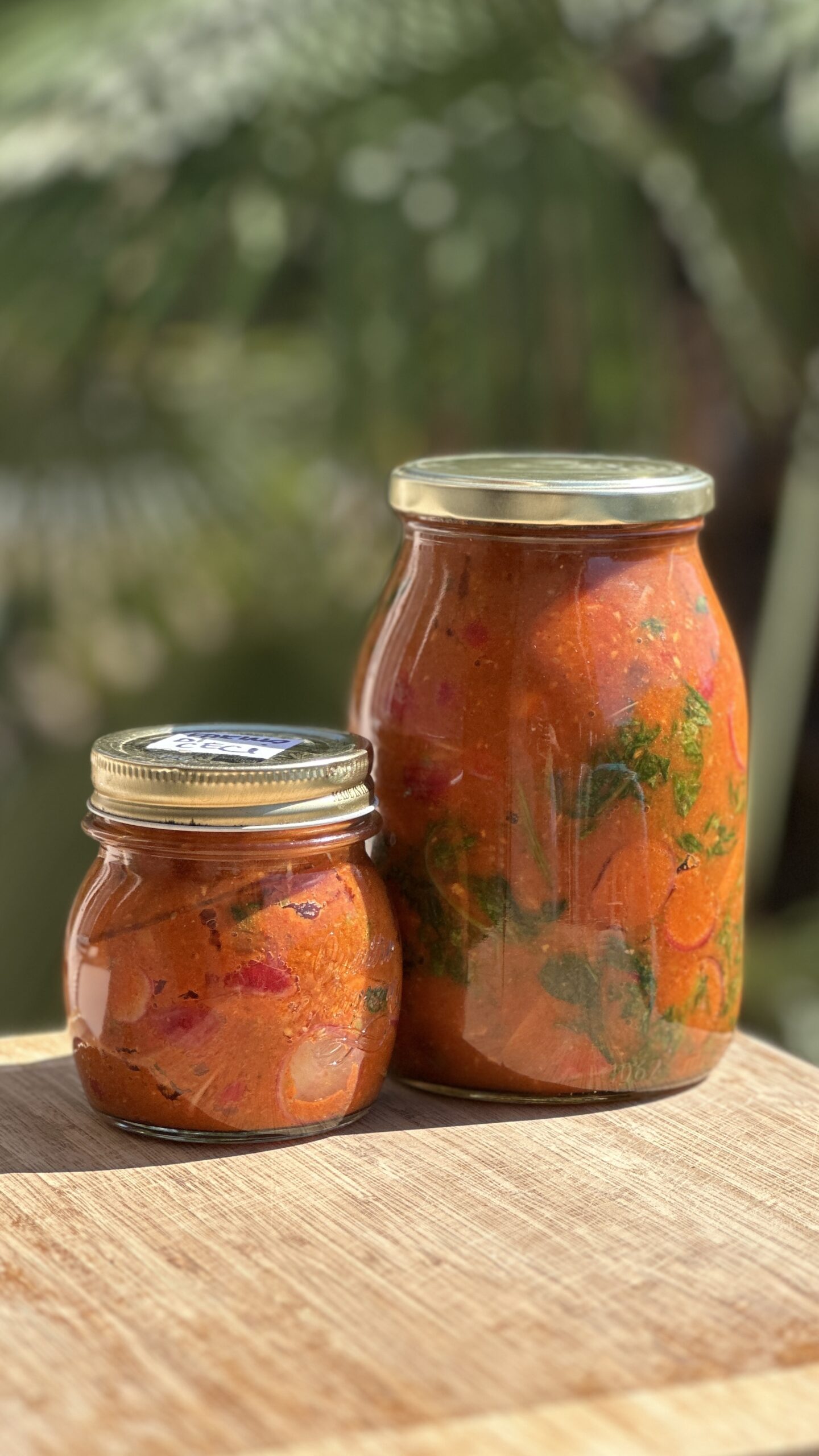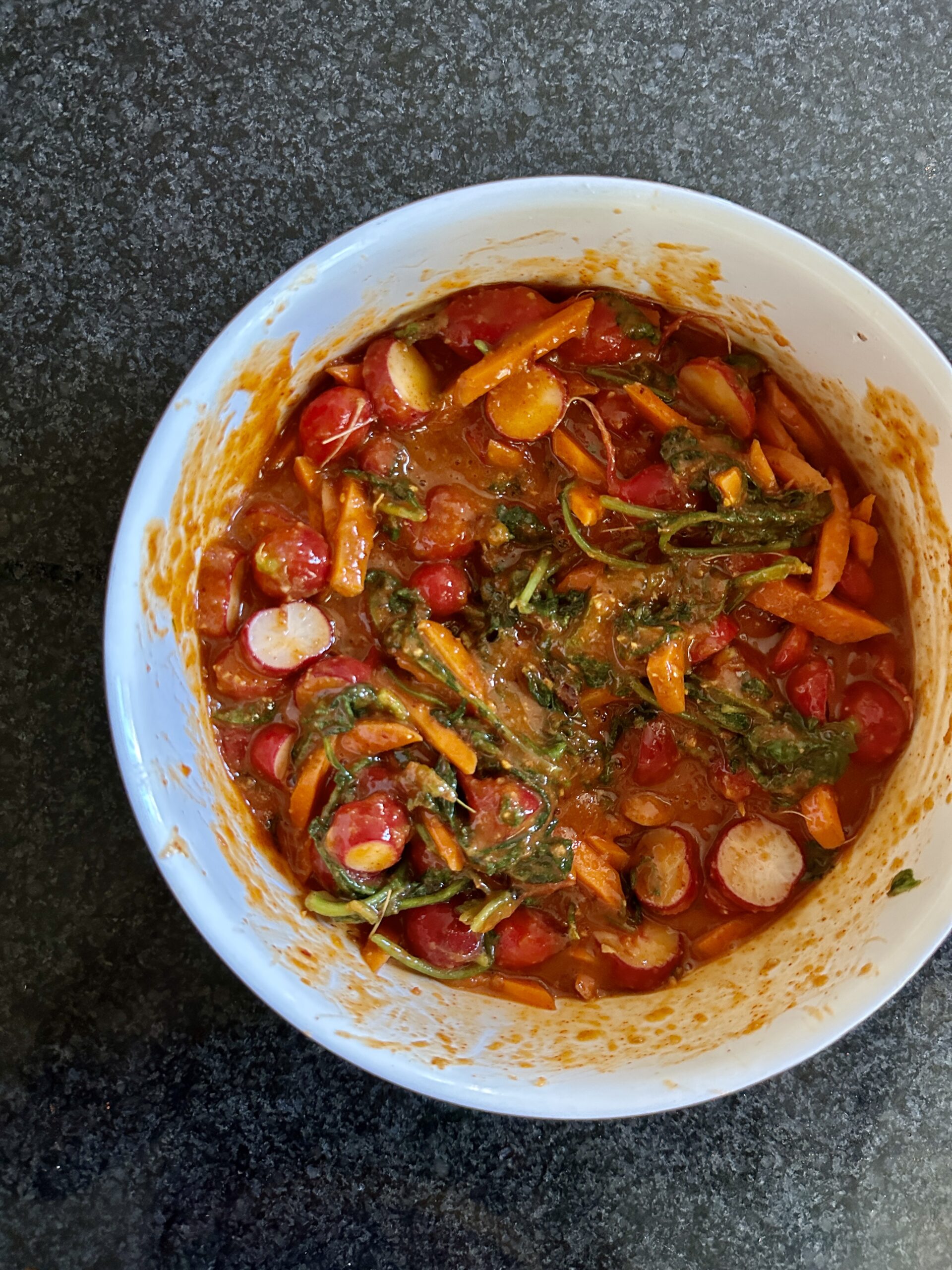Recipe in collaboration with an influencer @_thevegansideofthemoon
Leaves that usually end up in the compost can take center stage. I used radish leaves, but carrot, cauliflower, beet, broccoli leaves… anything left over is welcome here, because this is where they find new life. This kimchi is an invitation to look at what we often discard with different eyes — and transform it into a vibrant, rich, and surprising ferment.
• 500g radishes with their leaves
• 2 carrots
• Non-iodized fine salt, 2% of the weight of the vegetables
• 1 tablespoon rice flour + 150ml water
• 3-4 garlic cloves
• 1 red onion
• 25g fresh ginger
• 1 ripe pear
• 2-3 tablespoons gochugaru, Korean chili flakes
• 4 tablespoons Ganjang, Korean soy sauce
Cleaning of work surface + tools: You can sterilize the glass jar (or jars) you will put the kimchi in, but it’s not strictly necessary — washing it in the dishwasher and letting it dry works fine.
Hygine it’s important for all the kitchen tools and the surface you will work, so make sure everything is clean.
Prepare the vegetables & make the rice paste: Wash all vegetables thoroughly.
Make sure they are not treated with pesticides. In a small saucepan, combine the rice flour and water.
Bring to a boil while whisking continuously.
Lower the heat and cook for a few more minutes until the mixture thickens to a yogurt-like consistency. Let it cool.
Cut the radishes and carrots accordingly to your desired shape: I kept my small radishes whole, while cut in half the bigger ones, I made sticks out of carrots and left the leaves of the radish whole.
Place the veggies in a bowl and add 2% of non-iodized salt (measured on the weight of the veggies); mix well and let it rest while making the sauce. For that, combine ingredients in a mixer: the cooled rice paste, garlic, red onion, ginger (with its skin), pear, gochugaru, and Ganjang. Blend until it becomes a smooth paste – the consistency should be “sauce-like”, definitely not too thick.


While making the paste, the veggies have most probably released their water.
At this point you can add the paste and mix well, then fill the jar.
Use the back of a spoon to make sure there aren’t air pockets while filling the jar and make sure that all the vegetables are completely covered by the paste.
You can use a small press to compact them – I suggest it warmly.
From the contemplation of nature’s beauty and a deep curiosity for everything that can be discovered and savored in the woods comes the inspiration behind many of Alessia’s dishes – a
cook, content creator, plant-based cooking teacher, and aspiring mycologist – known on social media as The Vegan Side of the Moon.
Fermentation is one of her greatest culinary passions: an ancestral practice that preserves, enriches, and transforms each ingredient through the invisible work of bacteria and yeasts.
Cooking in harmony with the environment, respecting its rhythms and honoring its cycles – this is where, for Alessia, the magic in the kitchen begins.